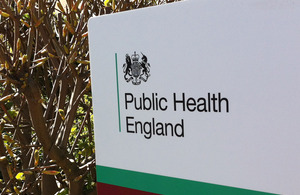Alcohol licensing: evaluating public health evidence in Medway
Public health teams in Medway have used research to present the voice of the local community and businesses to the Licensing Committee.

Summary
Medway is one of the largest urban areas in the south east of England with a population of 276,492 (2015). It is similar in size to cities such as Brighton and Hove.
In Medway:
- there are pockets of high deprivation, with associated health inequalities
- the average male life expectancy is below the national average
- alcohol has been identified as one of the key contributors to high mortality rates
Case study
A ward councillor, and Chair of the Community Safety Partnership (CSP), expressed concerns about the availability of alcohol from off licences in his and neighbouring wards. He felt this was fueling alcohol related harm in the area through crime and street drinking with associated nuisance. Public health were asked to assess if there was sufficient evidence to put before the Licensing Committee for a cumulative impact policy (CIP).
Public health drew together its own evidence, as well as evidence from Medway Community Safety Unit and Kent Police, and submitted a report to the Licensing Committee. The report recommended:
- CIPs in 4 areas
- 3 additional ‘stress areas’ where there were concerns but these were not sufficient for a CIP
In 3 of the CIP areas, there was sufficient evidence to include both on and off licensed premises, whereas the fourth area was off licence only.
The report was presented to the Licensing Committee by the Chair of the CSP, on behalf of all members. A consultation on the CIPs was agreed, as well as the additional ‘stress areas’.
What was involved
In addition to data concerning the wider determinants of health, public health identified the need to give local communities and businesses a voice in the process. This was undertaken in 2 ways.
First, several questions were included in the quarterly citizens’ survey, sent out to residents by the council. This was to identify areas where there was concern of alcohol related harms. Unfortunately, the process was long and the results were not received until after the evidence report was submitted to committee. However, the results confirmed the correct areas had been identified by the public health evidence gathering process. Alcohol related issues, such as begging, litter and other nuisance were also the identified by the community in these areas. The survey results will be included in the final evidence pack attached to the CIPs.
Second, an electronic questionnaire was developed. It was available on the council survey platform and was sent out to community and business groups in those areas which had been identified as being potentially suitable for a CIP. Each group was visited and their role in the process explained.
In addition to identifying the types of premises, types of issues and the days and times problems occurred, everyone was provided with the opportunity to write about their experiences, and these descriptions were included in the evidence report submitted to the councillors. These ‘stories’ proved very powerful, with residents and businesses describing their experiences of:
- intimidation
- begging
- drunk and aggressive behaviour
- public urination and defecation
All of the above were perceived to be alcohol related and allowed the community voice to be heard and to be part of the process. The ‘stories’ also illustrated how each proposed area experienced different issues.
The report used public health data for:
- multiple indices of deprivation
- location of licensed premises
- alcohol related crime, disorder and anti-social behaviour
- domestic abuse
- ambulance call outs where alcohol was deemed to be a contributory factor by ambulance staff
- alcohol related hospital admissions
- Medway hospital accident and emergency assault presentations
- locations of alcohol control zones (to be replaced with Public Spaces Protection Orders)
- locations of alcohol related nuisance including street drinking, alcohol related litter, public defecation and urination and drugs litter
The report included evidence from clients of Medway service providers, such as substance misuse support services and housing services of where they buy their alcohol and what they buy.
There was also evidence from residents and businesses in the form of the citizen survey and questionnaire results. These identified areas of concern, types of issues (related to the 4 licensing objectives), when problems occurred and if there was a perceived relationship between the number and type of licensed premises in that area and the problems identified. Respondents were also given the opportunity to outline in their own words their experiences of alcohol related problems
Outcome
While the CIP consultation process has begun, it won’t be agreed by the full council until early 2018.
The primary research has helped the CIP process and the data will form part of the formal evidence attached to the policies. It will also provide a useful benchmark against which to measure any difference the CIPs make in the relevant areas.
The survey and questionnaire evidence has been used to support representations in 2 licensing applications; a new off licence application and a review by the police in relation to an off licence believed to be selling alcohol to street drinkers associated with anti-social behaviour.
The applicant for the new licence agreed to reduce licensing hours and to include a condition stopping the sale of beer and cider above 5.5% alcohol by volume (ABV). The reviewed application was heard before the Licensing Committee and the premises had a condition imposed stopping the sale of beer and cider above 6.5% ABV as well as a 14-day suspension.
The electronic questionnaire is also available on the public health system for future use.